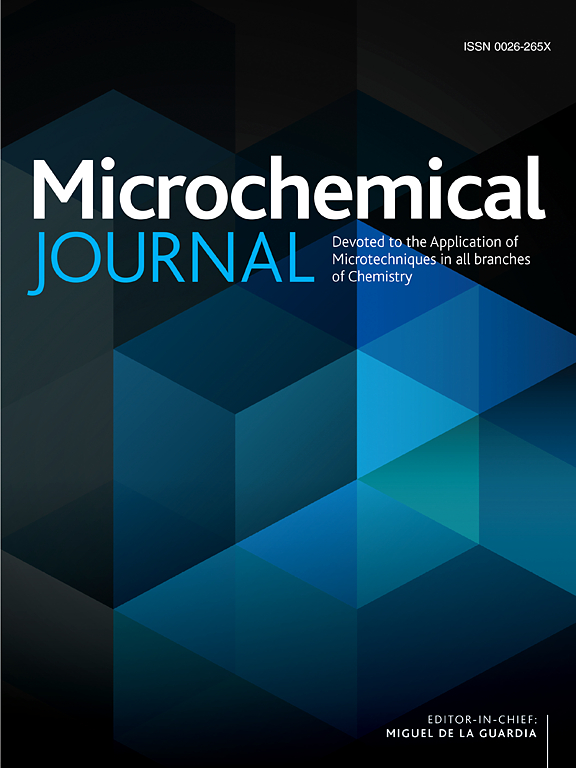基于EDC和HCR的无酶无标签电化学配体传感器检测食品中T-2毒素
IF 4.9
2区 化学
Q1 CHEMISTRY, ANALYTICAL
引用次数: 0
摘要
T-2对人和动物都是有毒的,摄入T-2可引起呕吐、腹泻、发烧等急性中毒症状,可导致多器官衰竭甚至死亡。基于熵驱动催化(EDC)和杂交链式反应(HCR),设计了一种低成本、无酶、无标签的食品中T-2电化学感应传感器。T-2与适体结合释放t链,触发EDC释放o链,打开固定在电极表面的发夹H1,触发HCR生成长双链DNA (dsDNA),电极浸泡在亚甲基蓝(MB)溶液中后产生显著增强的电流。该传感器的检出限低至85 fg/mL,线性检测范围为100 fg/mL ~ 100 ng/mL,表明该传感器在食品中T-2的检测中具有广阔的应用前景。本文章由计算机程序翻译,如有差异,请以英文原文为准。

Enzyme-free and label-free electrochemical aptasensor based on EDC and HCR for the detection of T-2 toxin in food
T-2 is toxic to human and animals, ingestion of T-2 can cause acute toxic symptoms such as vomiting, diarrhea, and fever, which can lead to multiple organ failure or even death. Based on the entropy-driven catalysis (EDC) and hybridization chain reaction (HCR), we designed an enzyme-free and label-free electrochemical aptasensor for sensitive T-2 detection in food at low cost. The T-chain was released due to the binding of T-2 to the aptamer, which triggered the EDC to release the O-chain, which opened the hairpin H1 fixed on the electrode surface and triggered the HCR to produce long double-stranded DNA (dsDNA), which produced a significantly enhanced current after immersing the electrode in methylene blue (MB) solution. The detection limit of the sensor was as low as 85 fg/mL, and the linear detection range of the sensor was 100 fg/mL-100 ng/mL, which suggests that the sensor has a promising application in the detection of T-2 in food.
求助全文
通过发布文献求助,成功后即可免费获取论文全文。
去求助
来源期刊

Microchemical Journal
化学-分析化学
CiteScore
8.70
自引率
8.30%
发文量
1131
审稿时长
1.9 months
期刊介绍:
The Microchemical Journal is a peer reviewed journal devoted to all aspects and phases of analytical chemistry and chemical analysis. The Microchemical Journal publishes articles which are at the forefront of modern analytical chemistry and cover innovations in the techniques to the finest possible limits. This includes fundamental aspects, instrumentation, new developments, innovative and novel methods and applications including environmental and clinical field.
Traditional classical analytical methods such as spectrophotometry and titrimetry as well as established instrumentation methods such as flame and graphite furnace atomic absorption spectrometry, gas chromatography, and modified glassy or carbon electrode electrochemical methods will be considered, provided they show significant improvements and novelty compared to the established methods.
 求助内容:
求助内容: 应助结果提醒方式:
应助结果提醒方式:


